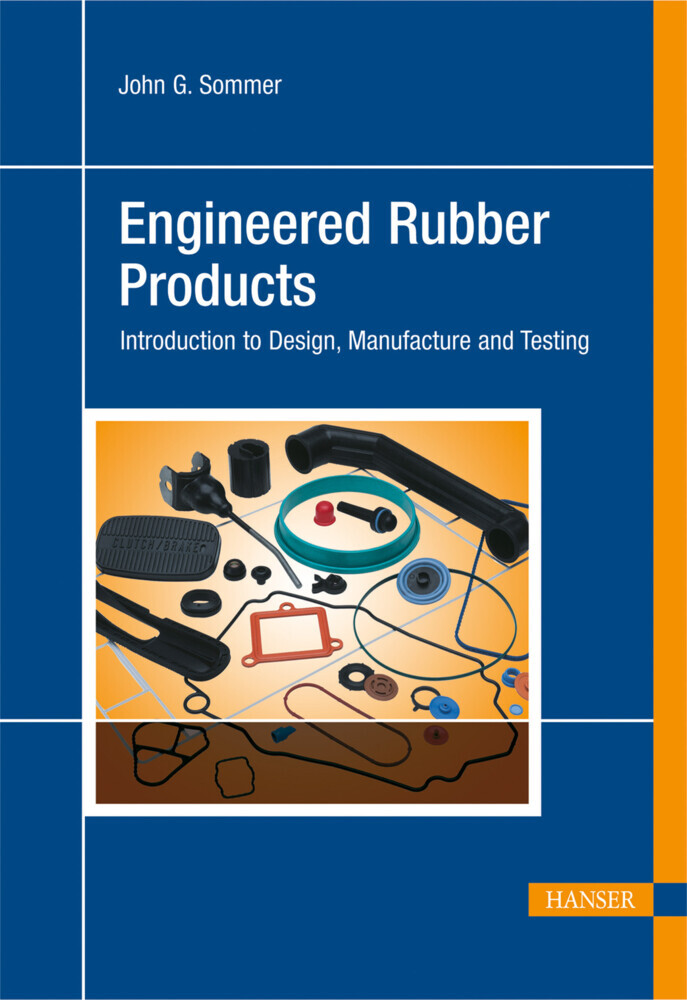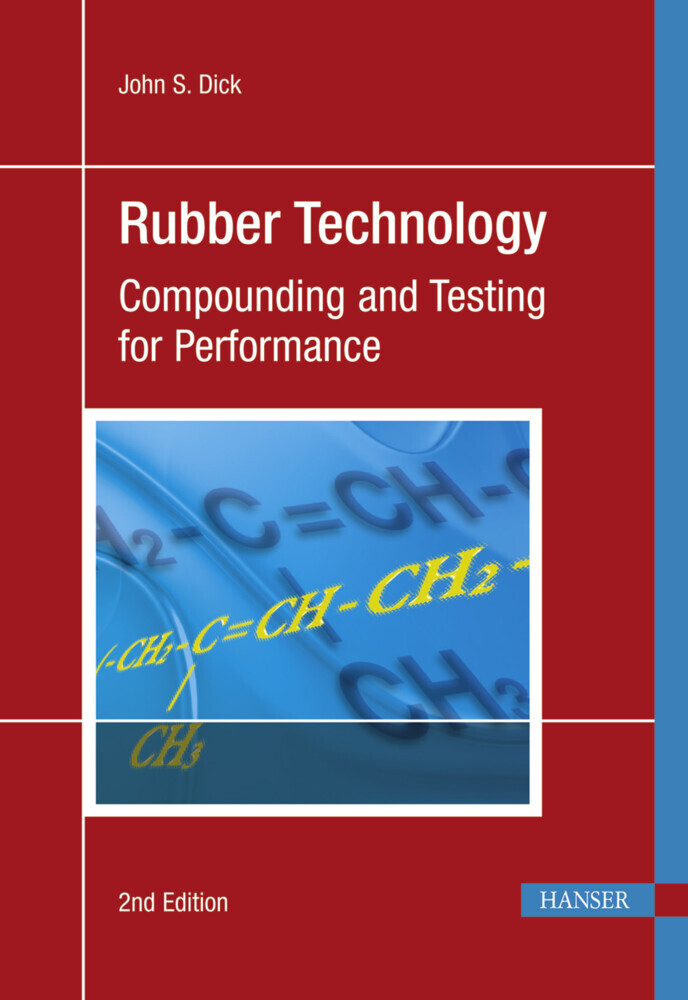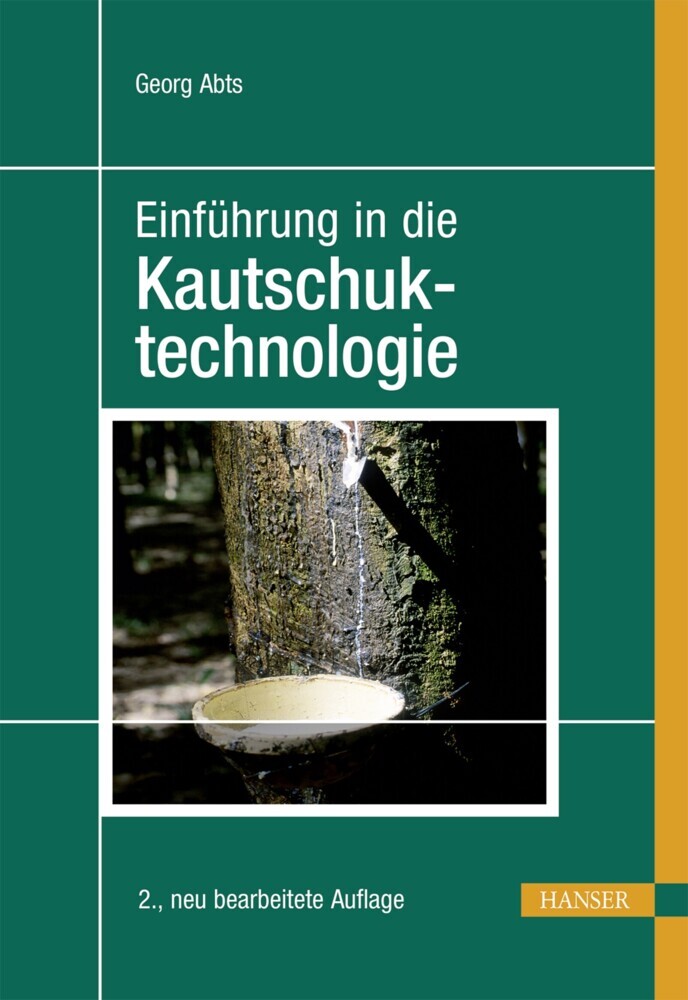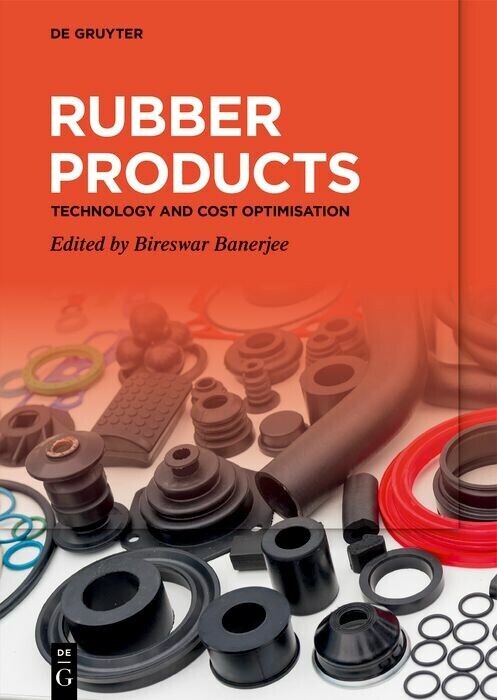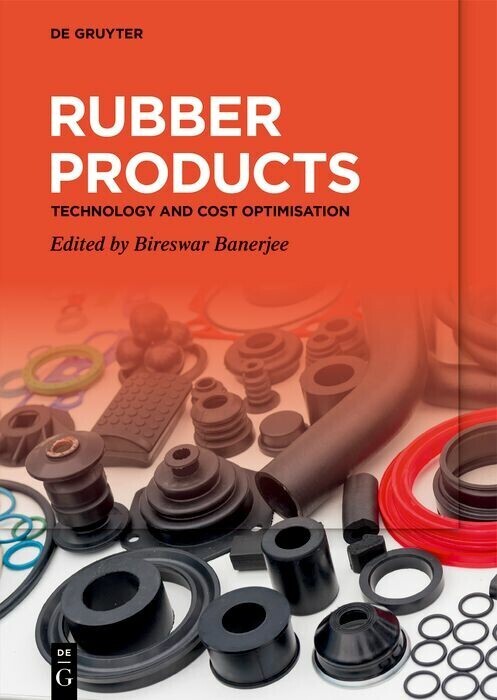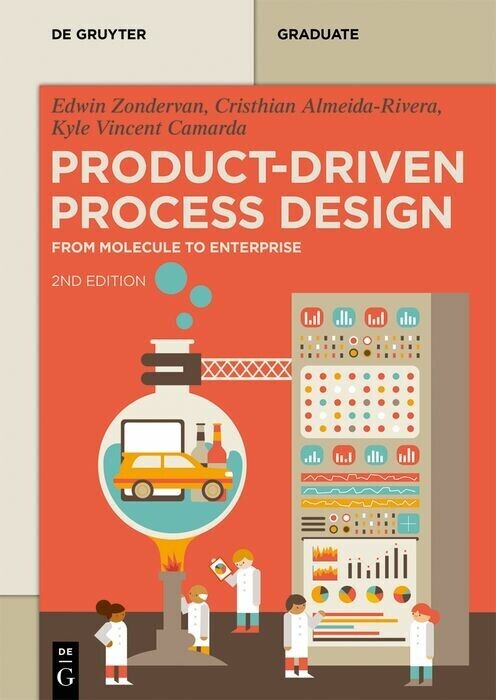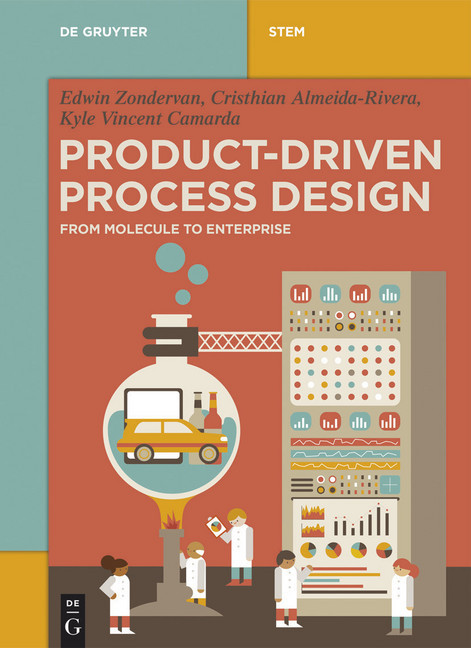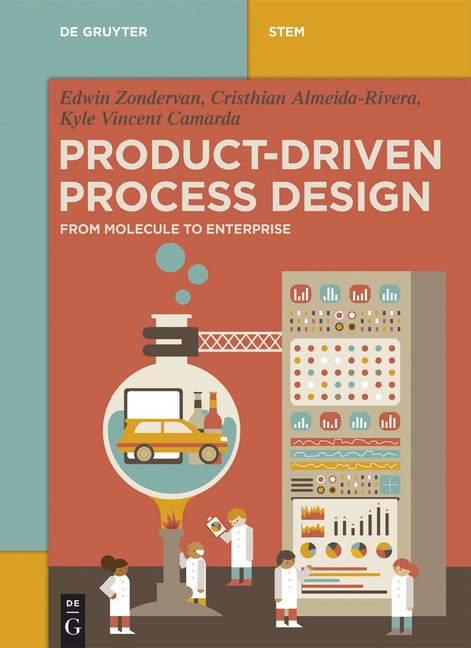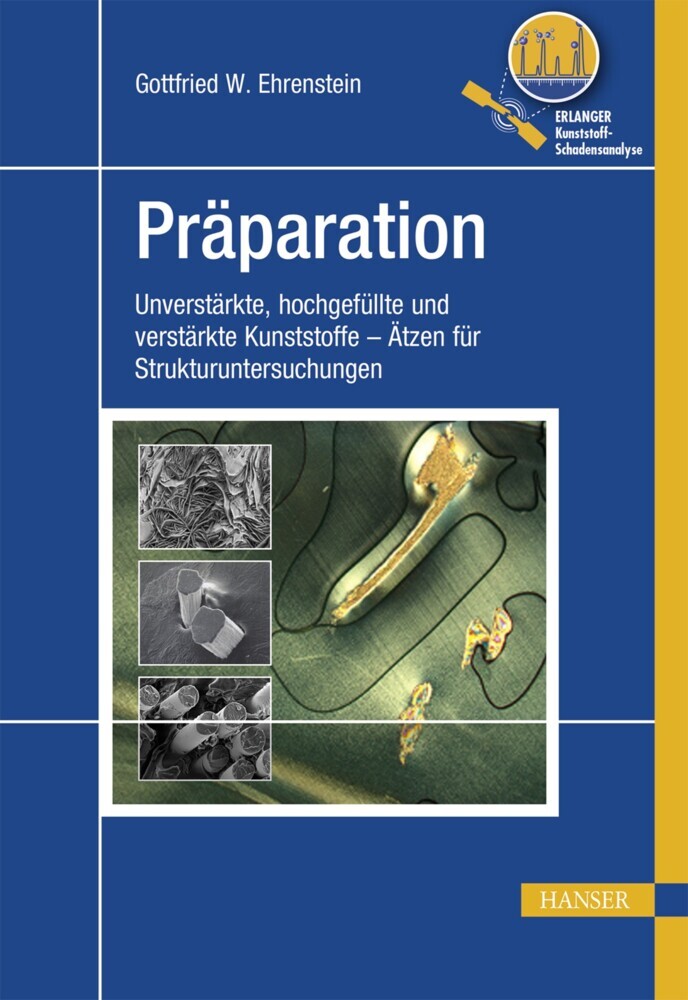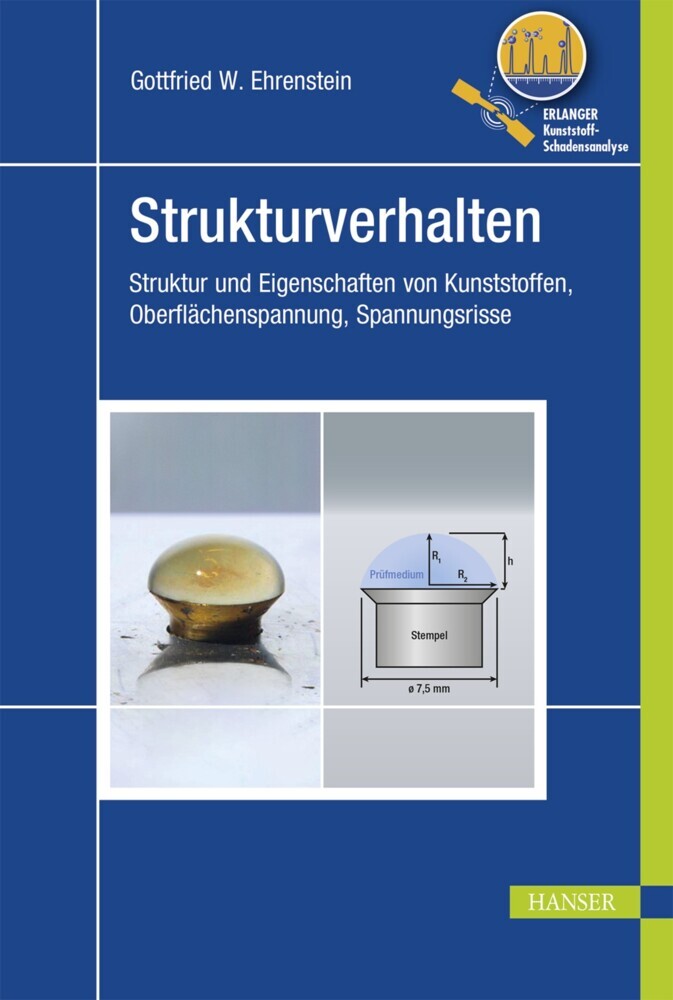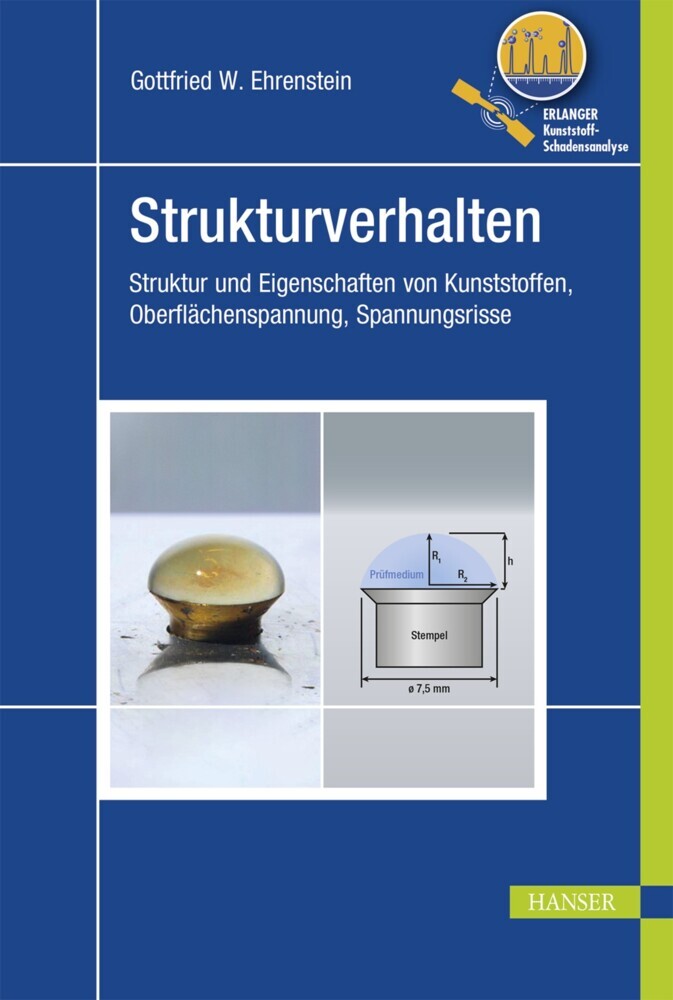Engineered Rubber Products
Introduction to Design, Manufacture and Testing
The successful manufacture of engineered rubber products is complicated. It involves different disciplines, materials, and types and designs of equipment.
Problems sometimes occur because of less-than-desirable communication among personnel involved in the development and manufacture of rubber products. This book's intent is to improve communication among different disciplines. Using a systems approach, it is further intended to introduce chemists and engineers to the unique capabilities of rubber in a wide range of tire and non-tire products.
It is the author's experience derived from teaching a number of rubber-related courses over several decades that much relevant and useful rubber literature is underutilized, resulting in reinvention of the wheel.
This book, which incorporates extensive bibliographies in most of its sections, can be read by individual section of interest or in its entirety. The reader is encouraged to obtain relevant references to broaden his or her reach.
Introduction
Elastomers and Compounds
Compound Mixing and Processing
Testing and Properties
Product Design
Use of Computers and FEA with Rubber
Non-Tire Products
Tires
1;Acknowledgments;6
Problems sometimes occur because of less-than-desirable communication among personnel involved in the development and manufacture of rubber products. This book's intent is to improve communication among different disciplines. Using a systems approach, it is further intended to introduce chemists and engineers to the unique capabilities of rubber in a wide range of tire and non-tire products.
It is the author's experience derived from teaching a number of rubber-related courses over several decades that much relevant and useful rubber literature is underutilized, resulting in reinvention of the wheel.
This book, which incorporates extensive bibliographies in most of its sections, can be read by individual section of interest or in its entirety. The reader is encouraged to obtain relevant references to broaden his or her reach.
Introduction
Elastomers and Compounds
Compound Mixing and Processing
Testing and Properties
Product Design
Use of Computers and FEA with Rubber
Non-Tire Products
Tires
1;Acknowledgments;62;Preface and Disclaimer;83;Contents;104;1 Introduction;144.1;References;255;2 Elastomers and Compounds;285.1;References;366;3 Compound Mixing and Processing;386.1;3.1 Calendering;426.2;3.2 Extrusion;426.3;3.3 Molding;456.3.1;3.3.1 Compression Molding;476.3.2;3.3.2 Transfer Molding;526.3.3;3.3.3 Injection Molding of TPEs;606.3.4;References;627;4 Testing and Properties;647.1;4.1 Measuring Viscosity and Scorch;657.2;4.2 Hardness;677.3;4.3 Stress-Strain Properties;677.3.1;4.3.1 Uniaxial Deformation;677.3.2;4.3.2 Biaxial Deformation;697.3.3;4.3.3 Triaxial Deformation;717.3.4;4.3.4 Triaxial Tension;737.4;4.4 Viscoelastic Properties;777.4.1;4.4.1 Creep;787.4.2;4.4.2 Stress Relaxation;787.4.3;4.4.3 Compression Set;787.5;4.5 Dynamic Properties;797.5.1;4.5.1 Fatigue and Cut Growth;817.5.2;4.5.2 Tensile Failure;827.5.3;4.5.3 Hysteresis and Resilience;827.5.4;4.5.4 Abrasion;837.5.5;4.5.5 Friction;837.6;4.6 Other Rubber Properties;847.6.1;4.6.1 Effect of Test Temperature;847.6.2;4.6.2 Conductivity;857.6.3;4.6.3 Adhesion;857.6.4;4.6.4 Permeability;867.7;4.7 Deterioration;867.7.1;4.7.1 Weather;867.7.2;4.7.2 Ozone;877.7.3;4.7.3 High-Energy Radiation;877.7.4;4.7.4 High Temperature;877.8;4.8 Rubber Ingredient Compatibility;887.9;4.9 Electrical Properties;907.10;4.10 Non-Destructive Testing;907.10.1;4.10.1 Testing and Computers;907.11;References;928;5 Product Design;968.1;5.1 Mountings;978.2;5.2 Hose;1048.3;5.3 Belting;1078.4;5.4 Constant Velocity Joint (CVJ) Boots;1088.5;5.5 Mounts and Bearings;1098.5.1;5.5.1 Shape Factor;1098.5.2;5.5.2 Bridge Bearings;1098.5.3;5.5.3 Earthquake Bearings;1108.5.4;5.5.4 Testing and Quality Control;1118.6;References;1179;6 Use of Computers and FEA with Rubber;1229.1;6.1 Compounding;1249.1.1;6.1.1 Vulcanization;1249.1.2;6.1.2 Compound Development;1249.2;6.2 Stress in a Dumbbell Tensile Specimen;1249.3;6.3 FEA and Thermal Considerations;1269.4;6.4 Resistance of Rubber to Small Indentations;1269.5;6.5 Use of FEA in Various Application Areas;1269.6;References;13110;7 Non-Tire Products;13410.1;7.1 Adhesion;13410.2;7.2 Hose and Belting;13610.2.1;7.2.1 Hose;13710.2.2;7.2.2 Belts;13810.3;7.3 Mountings, Bearings, and Bushings;14010.3.1;7.3.1 Mountings;14010.3.2;7.3.2 Bearings;14110.4;7.4 Energy Storage and Dissipation;14410.5;7.5 Rolls;14510.6;7.6 Seals;14510.6.1;7.6.1 Pump Seal;14610.6.2;7.6.2 Automotive Transmission Seals;14710.6.3;7.6.3 Casket Seals;14710.6.4;7.6.4 Automotive Door Seals;14710.7;7.7 Other Applications;14810.8;References;15111;8 Tires;15611.1;8.1 Introduction;15611.2;8.2 Materials;15711.3;8.3 Pneumatic Tires;15811.3.1;8.3.1 Types of Tires;15811.3.2;8.4 Tire Reinforcement;16211.3.2.1;8.4.1 Bead Wire and Tire Cord;16211.3.3;8.5 Tire Construction;16311.3.4;8.6 Component Interdependence;16511.3.5;8.7 Component Preparation and Tire Fabrication;16611.3.5.1;8.7.1 Component Preparation;16611.3.5.2;8.7.2 Fabrication;16711.3.6;8.8 Tire Aging;17111.3.7;8.9 In-Service Tire Damage and Safety;17111.3.8;8.10 Run-Flat Tires;17211.3.9;8.11 Passenger Tire Design;17311.3.9.1;8.11.1 Aspect Ratio;17311.3.10;8.12 Truck Tires;17411.3.11;8.13 Very Large Tires;17511.3.12;8.14 Aircraft Tires;17511.3.13;8.15 Solid Tires;17611.3.14;8.16 Semi-Pneumatic Tires;17611.3.15;8.17 Non-Traditional Tires;17611.3.16;References;17812;Appendix 1: Conversion Factors;18213;Appendix 2: Acronyms and Abbreviations;18414;Subject Index;188
1;Acknowledgments;6
2;Preface and Disclaimer;8
3;Contents;10
4;1 Introduction;14
4.1;References;25
5;2 Elastomers and Compounds;28
5.1;References;36
6;3 Compound Mixing and Processing;38
6.1;3.1 Calendering;42
6.2;3.2 Extrusion;42
6.3;3.3 Molding;45
6.3.1;3.3.1 Compression Molding;47
6.3.2;3.3.2 Transfer Molding;52
6.3.3;3.3.3 Injection Molding of TPEs;606.3.4;References;62
7;4 Testing and Properties;64
7.1;4.1 Measuring Viscosity and Scorch;65
7.2;4.2 Hardness;67
7.3;4.3 Stress-Strain Properties;67
7.3.1;4.3.1 Uniaxial Deformation;67
7.3.2;4.3.2 Biaxial Deformation;69
7.3.3;4.3.3 Triaxial Deformation;71
7.3.4;4.3.4 Triaxial Tension;73
7.4;4.4 Viscoelastic Properties;77
7.4.1;4.4.1 Creep;78
7.4.2;4.4.2 Stress Relaxation;78
7.4.3;4.4.3 Compression Set;78
7.5;4.5 Dynamic Properties;79
7.5.1;4.5.1 Fatigue and Cut Growth;81
7.5.2;4.5.2 Tensile Failure;82
7.5.3;4.5.3 Hysteresis and Resilience;82
7.5.4;4.5.4 Abrasion;83
7.5.5;4.5.5 Friction;83
7.6;4.6 Other Rubber Properties;84
7.6.1;4.6.1 Effect of Test Temperature;84
7.6.2;4.6.2 Conductivity;85
7.6.3;4.6.3 Adhesion;85
7.6.4;4.6.4 Permeability;86
7.7;4.7 Deterioration;86
7.7.1;4.7.1 Weather;86
7.7.2;4.7.2 Ozone;87
7.7.3;4.7.3 High-Energy Radiation;87
7.7.4;4.7.4 High Temperature;87
7.8;4.8 Rubber Ingredient Compatibility;88
7.9;4.9 Electrical Properties;90
7.10;4.10 Non-Destructive Testing;90
7.10.1;4.10.1 Testing and Computers;90
7.11;References;92
8;5 Product Design;96
8.1;5.1 Mountings;97
8.2;5.2 Hose;104
8.3;5.3 Belting;107
8.4;5.4 Constant Velocity Joint (CVJ) Boots;108
8.5;5.5 Mounts and Bearings;109
8.5.1;5.5.1 Shape Factor;109
8.5.2;5.5.2 Bridge Bearings;109
8.5.3;5.5.3 Earthquake Bearings;110
8.5.4;5.5.4 Testing and Quality Control;111
8.6;References;117
9;6 Use of Computers and FEA with Rubber;122
9.1;6.1 Compounding;124
9.1.1;6.1.1 Vulcanization;124
9.1.2;6.1.2 Compound Development;124
9.2;6.2 Stress in a Dumbbell Tensile Specimen;124
9.3;6.3 FEA and Thermal Considerations;126
9.4;6.4 Resistance of Rubber to Small Indentations;126
9.5;6.5 Use of FEA in Various Application Areas;126
9.6;References;131
10;7 Non-Tire Products;134
10.1;7.1 Adhesion;134
10.2;7.2 Hose and Belting;136
10.2.1;7.2.1 Hose;137
10.2.2;7.2.2 Belts;138
10.3;7.3 Mountings, Bearings, and Bushings;140
10.3.1;7.3.1 Mountings;140
10.3.2;7.3.2 Bearings;141
10.4;7.4 Energy Storage and Dissipation;144
10.5;7.5 Rolls;145
10.6;7.6 Seals;145
10.6.1;7.6.1 Pump Seal;146
10.6.2;7.6.2 Automotive Transmission Seals;147
10.6.3;7.6.3 Casket Seals;147
10.6.4;7.6.4 Automotive Door Seals;147
10.7;7.7 Other Applications;148
10.8;References;151
11;8 Tires;156
11.1;8.1 Introduction;156
11.2;8.2 Materials;157
11.3;8.3 Pneumatic Tires;158
11.3.1;8.3.1 Types of Tires;158
11.3.2;8.4 Tire Reinforcement;162
11.3.2.1;8.4.1 Bead Wire and Tire Cord;162
11.3.3;8.5 Tire Construction;163
11.3.4;8.6 Component Interdependence;165
11.3.5;8.7 Component Preparation and Tire Fabrication;166
11.3.5.1;8.7.1 Component Preparation;166
11.3.5.2;8.7.2 Fabrication;167
11.3.6;8.8 Tire Aging;171
11.3.7;8.9 In-Service Tire Damage and Safety;171
11.3.8;8.10 Run-Flat Tires;172
11.3.9;8.11 Passenger Tire Design;173
11.3.9.1;8.11.1 Aspect Ratio;173
11.3.10;8.12 Truck Tires;174
11.3.11;8.13 Very Large Tires;175
11.3.12;8.14 Aircraft Tires;175
11.3.13;8.15 Solid Tires;176
11.3.14;8.16 Semi-Pneumatic Tires;176
11.3.15;8.17 Non-Traditional Tires;176
11.3.16;References;178
12;Appendix 1: Conversion Factors;182
13;Appendix 2: Acronyms and Abbreviations;184
14;Subject Index;188
Sommer, John G.
| ISBN | 9783446433441 |
|---|---|
| Artikelnummer | 9783446433441 |
| Medientyp | E-Book - PDF |
| Copyrightjahr | 2012 |
| Verlag | Carl Hanser Verlag München |
| Umfang | 182 Seiten |
| Sprache | Englisch |
| Kopierschutz | Digitales Wasserzeichen |

